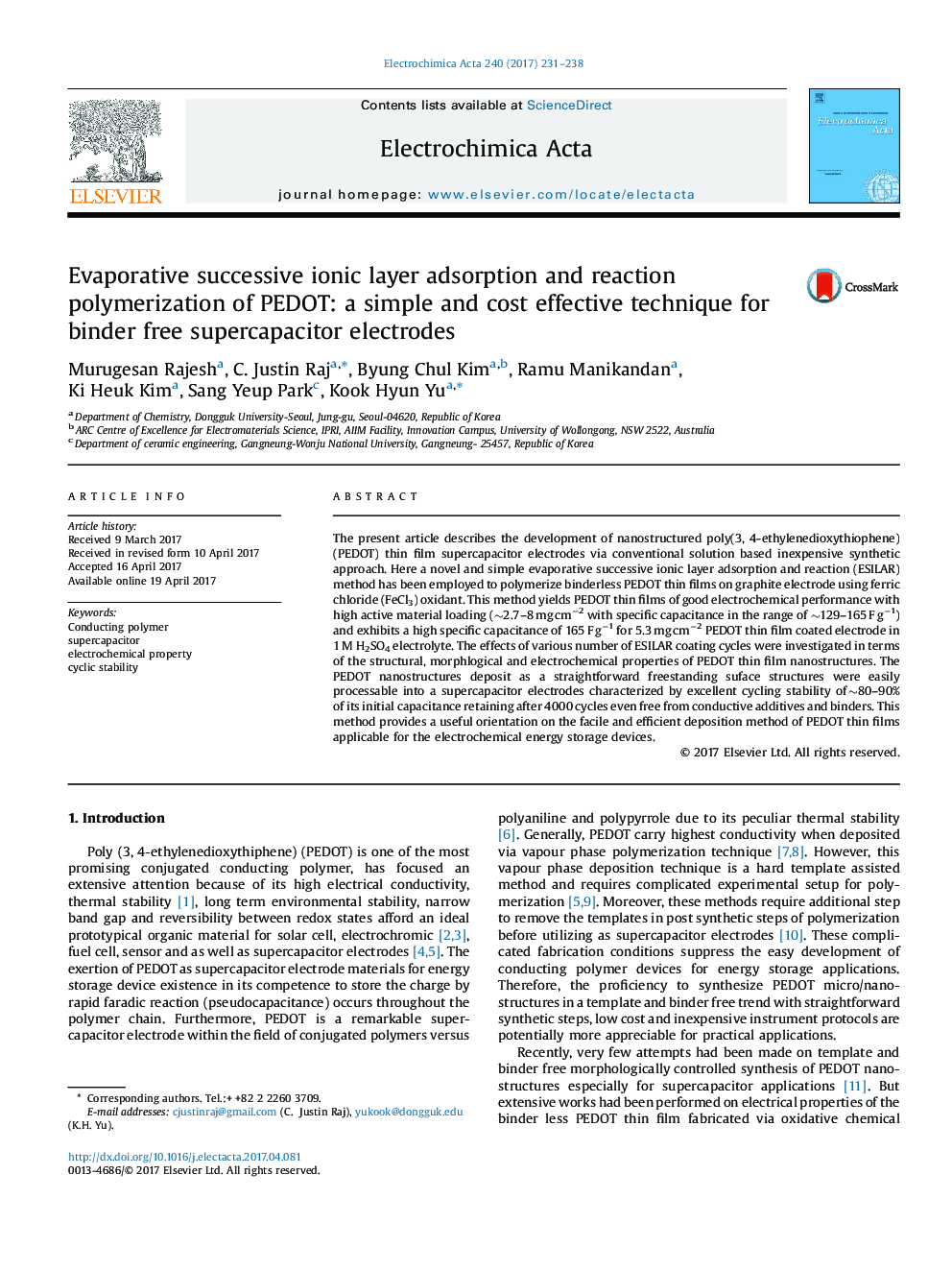| Article ID | Journal | Published Year | Pages | File Type |
|---|---|---|---|---|
| 6471285 | Electrochimica Acta | 2017 | 8 Pages |
â¢ESILAR a novel and attractive synthetic approach of PEDOT thin films.â¢Effects of various coating cycles of PEDOT thin film properties are investigated.â¢A remarkable electrochemical performances with high mass loading for binder free PEDOT electrodes.
The present article describes the development of nanostructured poly(3, 4-ethylenedioxythiophene) (PEDOT) thin film supercapacitor electrodes via conventional solution based inexpensive synthetic approach. Here a novel and simple evaporative successive ionic layer adsorption and reaction (ESILAR) method has been employed to polymerize binderless PEDOT thin films on graphite electrode using ferric chloride (FeCl3) oxidant. This method yields PEDOT thin films of good electrochemical performance with high active material loading (â¼2.7-8 mg cmâ2 with specific capacitance in the range of â¼129-165 F gâ1) and exhibits a high specific capacitance of 165 F gâ1 for 5.3 mg cmâ2 PEDOT thin film coated electrode in 1 M H2SO4 electrolyte. The effects of various number of ESILAR coating cycles were investigated in terms of the structural, morphlogical and electrochemical properties of PEDOT thin film nanostructures. The PEDOT nanostructures deposit as a straightforward freestanding suface structures were easily processable into a supercapacitor electrodes characterized by excellent cycling stability ofââ¼80-90% of its initial capacitance retaining after 4000 cycles even free from conductive additives and binders. This method provides a useful orientation on the facile and efficient deposition method of PEDOT thin films applicable for the electrochemical energy storage devices.
Graphical abstractDownload high-res image (86KB)Download full-size image
